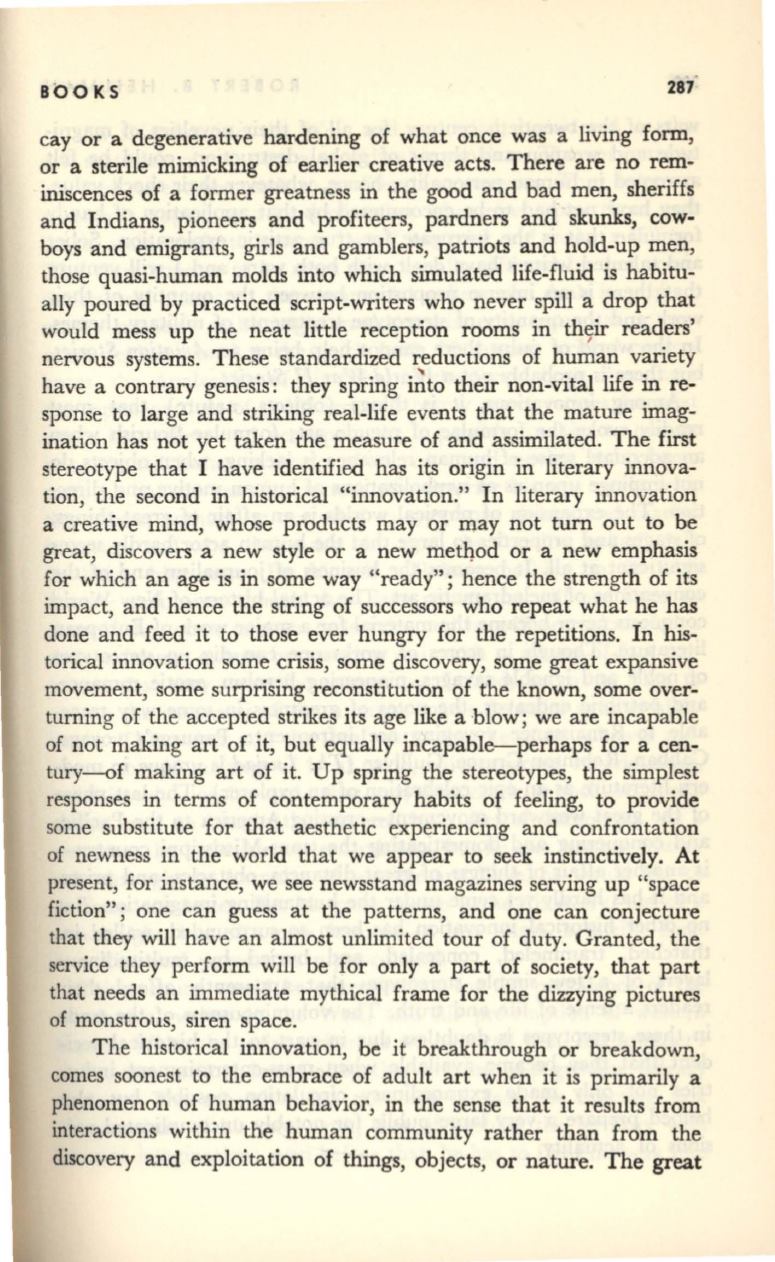
BOOKS
287
cay or a degenerative hardening of what once was a living form,
or a sterile mimicking of earlier creative acts. There are no rem–
iniscences of a former greatness in the good and bad men, sheriffs
and Indians, pioneers and profiteers, pardners and skunks, cow–
boys and emigrants, girls and gamblers, patriots and hold-up men,
those quasi-human molds into which simulated life-fluid is habitu–
ally poured by practiced script-writers who never spill a drop that
would mess up the neat little reception rooms in thl1ir readers'
nervous systems. These standardized reductions of human variety
,
have a contrary genesis: they spring into their non-vital life
in
re-
sponse to large and striking real-life events that the mature imag–
ination has not yet taken the measure of and assimilated. The first
stereotype that I have identified has its origin in literary innova–
tion, the second in historical "innovation."
In
literary innovation
a creative mind, whose products mayor may not turn out to be
great, discovers a new style or a new method or a new emphasis
for which an age is
in
some way "ready"; hence the strength of its
impact, and hence the string of successors who repeat what he has
done and feed it to those ever hungry for the repetitions.
In
his–
torical innovation some crisis, some discovery, some great expansive
movement, some surprising reconstitution of the known, some over–
turning of the accepted strikes its age like a blow; we are incapable
of not making art of it, but equally incapable-perhaps for a cen–
tury-of making art of it. Up spring the stereotypes, the simplest
responses
in
terms of contemporary habits of feeling, to provide
some substitute for that aesthetic experiencing and confrontation
of newness in the world that we appear to seek instinctively.
At
present, for instance, we see newsstand magazines serving up "space
fiction"; one can guess at the patterns, and one can conjecture
that they will have an almost unlimited tour of duty. Granted, the
service they perform will be for only a part of society, that part
that needs an immediate mythical frame for the dizzying pictures
of monstrous, siren space.
The historical innovation, be it breakthrough or breakdown,
comes soonest to the embrace of adult art when it is primarily a
phenomenon of human behavior, in the sense that it results from
interactions within the human community rather than from the
discovery and exploitation of things, objects, or nature. The great


